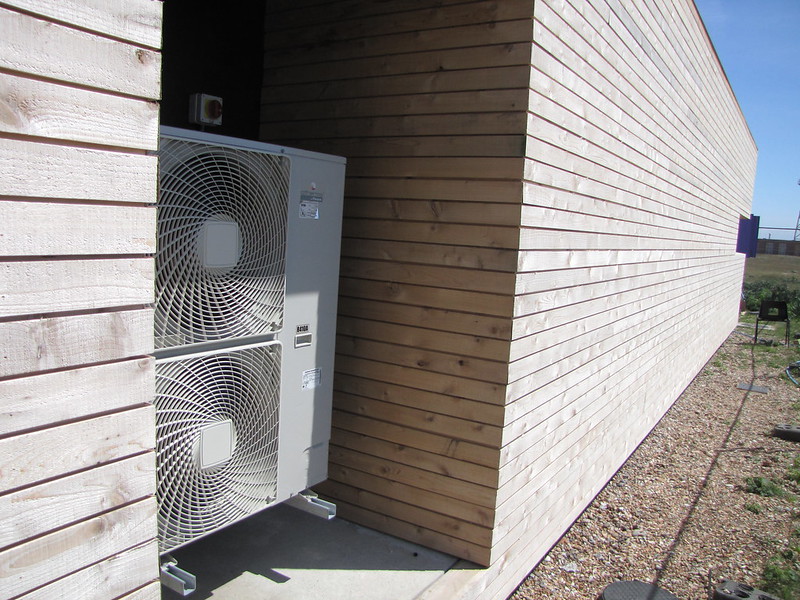Air source heat pump water heaters (HPWHs) can indeed create condensation, especially in high-humidity environments or during certain operating modes. The formation of condensation is a normal part of the HPWH’s operation and is a result of the heat exchange process.
Understanding Condensation Formation in HPWHs
The primary reason for condensation formation in HPWHs is the temperature difference between the cold coil of the heat exchanger and the surrounding air. When the coil temperature drops below the dew point of the air, moisture in the air condenses on the coil’s surface. This condensed water is then typically directed into a drain or drip tray for proper disposal.
Factors Affecting Condensation Formation
Several factors can influence the amount of condensation produced by an HPWH:
- Humidity Levels: Higher humidity levels in the surrounding air increase the likelihood of condensation formation, as the air can hold more moisture.
- Coil Temperature: The colder the coil temperature, the more likely it is for condensation to form. This is particularly relevant during the HPWH’s defrost cycle.
- Airflow: Proper airflow around the HPWH is essential to maintain efficient heat transfer and minimize condensation buildup.
- Insulation: Adequate insulation around the HPWH can help maintain the coil temperature and reduce the risk of condensation.
- Drainage System: An effective drainage system is crucial to safely and efficiently remove the condensate produced by the HPWH.
Condensation During Heating Mode
In heating mode, HPWHs can still produce condensation, particularly during defrost cycles. When frost or ice forms on the outdoor coils in cold temperatures, the system initiates a defrost cycle to melt the ice. The melted ice then drips off and can form a pool of water around the unit.
Defrost Cycle Operation
The defrost cycle is a necessary function of the HPWH to maintain efficient operation in cold weather. During this cycle, the system temporarily reverses the refrigerant flow to heat the outdoor coil and melt any accumulated frost or ice. The melted water then drains from the unit, which can lead to the formation of a puddle or pool around the HPWH.
Mitigating Condensation Issues
To prevent issues caused by excessive condensation during the defrost cycle, it is essential to ensure proper drainage for the HPWH. This can be achieved by:
- Proper Placement: Positioning the HPWH on a slightly sloped surface or platform to facilitate water drainage.
- Drainage System: Installing a dedicated condensate drain line or connecting the HPWH to an existing drainage system, such as a floor drain or sump pump.
- Insulation and Airflow: Maintaining proper insulation around the HPWH and ensuring adequate airflow to minimize the formation of condensation.
- Maintenance: Regularly inspecting and cleaning the HPWH’s drainage system to prevent blockages and ensure efficient water removal.
Excessive Condensation Concerns
While some condensation is normal and expected with the operation of an HPWH, excessive condensation can be problematic in certain situations. If the condensate forms on surfaces like walkways or tarmac, it can create slippery conditions and potentially cause damage to the surface.
Addressing Excessive Condensation
To address excessive condensation issues, it is crucial to:
- Identify the Cause: Determine the root cause of the excessive condensation, such as high humidity levels, improper installation, or a malfunctioning drainage system.
- Improve Drainage: Ensure that the HPWH’s drainage system is properly installed, unobstructed, and able to effectively remove the condensate.
- Enhance Insulation: Consider adding additional insulation around the HPWH to maintain the coil temperature and minimize condensation formation.
- Adjust Airflow: Optimize the airflow around the HPWH to improve heat transfer and reduce the likelihood of condensation.
- Monitor and Maintain: Regularly inspect the HPWH and its drainage system to identify and address any issues that may arise over time.
Conclusion
Air source heat pump water heaters are designed to create condensation as a normal part of their operation. This condensation is typically managed through the HPWH’s drainage system, but excessive condensation can be a concern in certain situations. By understanding the factors that influence condensation formation and implementing proper installation, maintenance, and drainage practices, homeowners and HVAC professionals can effectively manage the condensation produced by an HPWH and ensure its efficient and safe operation.

